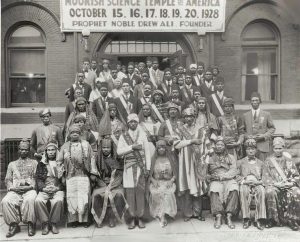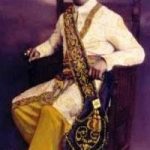By Eboni Boone-Neal
Have you ever heard of the Asiatic Black man? How could these seemingly polar racial identities come together in unity? Many scholars reference an important war known as the Russo-Japanese war, which occurred in 1905, as a cause to the construction of this new ethnoracial identity. The outcome of this war was a major upheaval to the authority of white supremacy. Black people in America took pride in Japan’s victory because it symbolized much more than a military achievement. W.E.B Dubois accredited this war as a major force in defense of all oppressed people around the world. Only a few months after the war, Dubois proclaimed that “the magic of the word ‘white’ is already broken” and since “the awakening of the yellow races is certain…the awakening of the brown and black races will follow in time” (Horne 45). DuBois idealized this victory as a triumph for all colored people in how it functioned as a disruption to white supremacy as a whole. Along a different premise, Reverend J.M. Boddy also regarded Russia’s defeat as an achievement of the black race. Instead, he characterized Japanese and black people in compatible racial terms. He asserted that the Japanese race “must be akin to the Negro race” and because of their “large infusion of Negro blood in their veins,” this was a victory that black people could justly claim as one of their own (Horne 44). In the wake of this heightened sense of racial pride amongst African Americans, black nationalist groups adopted Reverend Boddy’s view of Afro-Asian relations and merged the black and Asiatic identities to serve their agenda.
In 1913, less than a decade after the war, Noble Drew Ali founded the Moorish Science Temple of America.It was an iconic religious movement that tailored traditional Islam to invent an invigorated faith better suited than Christianity to confront the needs of the African American community. One of the major tenets of the movement’s theology was black people in the United States were Moorish Americans and descendants of the Moabites. Ali’s movement supplied African Americans with an alternative way to identify themselves other than race. Black people were considered inherently racially inferior, subhuman and undeserving of civil liberties on the basis of their race. The Moorish Science Temple of America encouraged black people to adopt an ethnicized view of their identity to avoid being stigmatized by these racial characterizations. The Koran explains, “the nationality of the Moors was taken away from them in 1774 and the word negro, black and colored, was given to the Asiatics of America who were of Moorish descent” (Chapter XLVII, The Holy Koran of Moorish Science Temple). Through means of signification, the Moorish Science Temple gave African Americans the power of self-definition. The conception of the Asiatic black man invalidated claims of inherent racial inferiority, distanced African Americans from the stigmatization of their race and proposed an alternative ancestry marked with prominence.

http://msta1913.org
This research challenges the validity of Ali’s understanding of black people’s heritage and how this new racial identity responded to the needs of African Americans through a seductive, religious framework. The Russo-Japanese War was one of the earliest provocations of an Afro-Asian alliance, but there were other occurrences that influenced the establishment of the Moorish Science Temple of America. The Great Migration led to the urbanization of black communities and proposed new challenges for African Americans. Consequently, organizations concerned with the welfare of black people such as the Moorish Science Temple helped African Americans cope with new urban realities. The Moorish Science Temple was attractive because the core teachings were custom fit for African Americans with its emphasis on black nationalism and self-definition. In asserting that Ali’s teachings were fabricated, the research will assess how the Asiatic black man functioned in the movement and why Ali used this identifier to signify black Americans. The Asiatic identity of the black man fueled African Americans with hope of redemption, pride in their heritage and offered an alternate ethnic identity to cloak their blackness.
Works Cited
Holy Koran of Moorish Science Temple of America. Noble Prophet Drew Ali, Hogarth Blake Ltd, 2008.
Horne, Gerald. Race War! White Supremacy and the Japanese Attack on the British Empire. New York, New York University Press, 2004.
Turner, Brent. Islam in the African-American Experience. Second Edition. Bloomington, Indiana, Indiana University Press, 2003.

